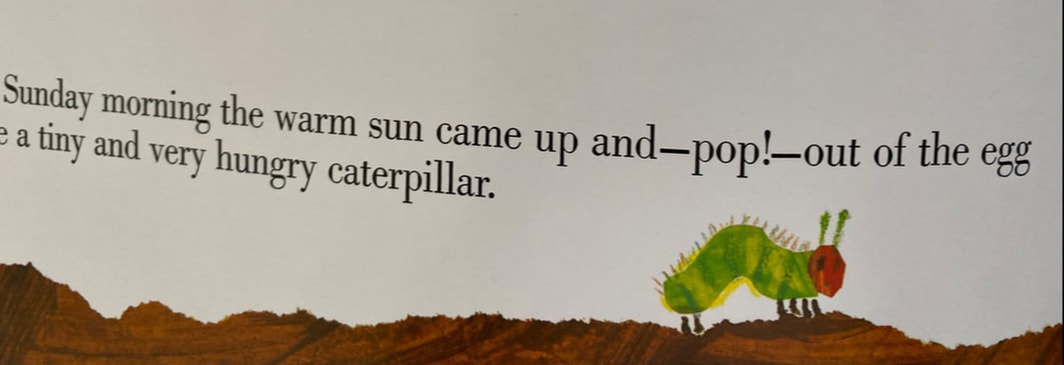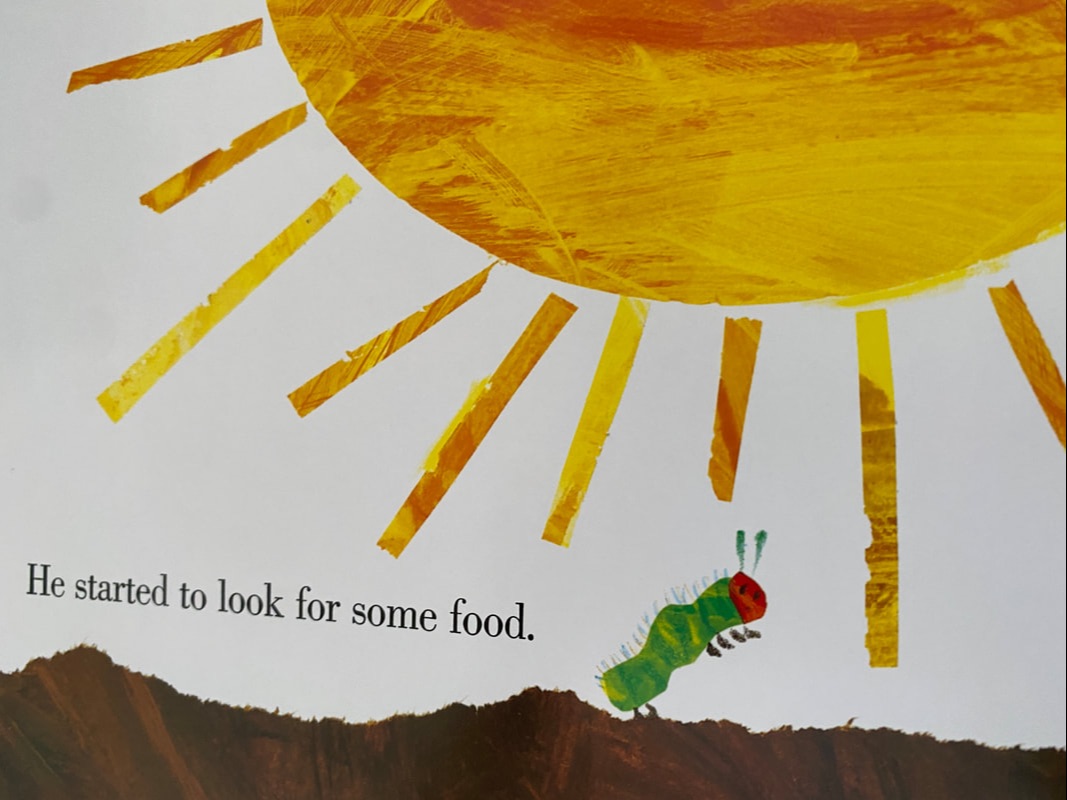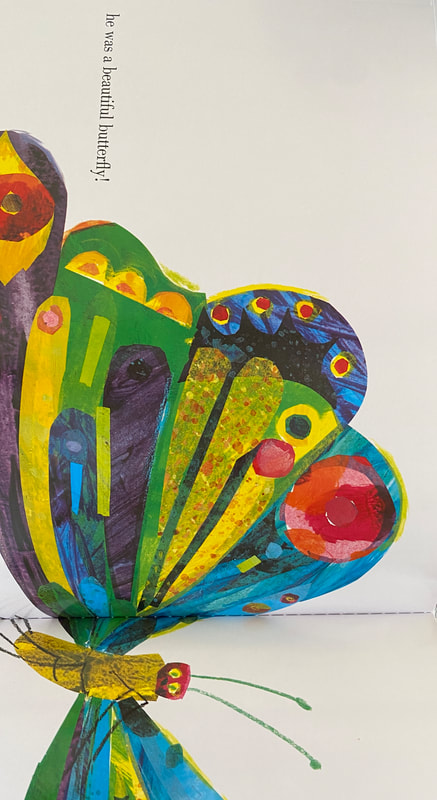The very hungry caterpillar! Today, I would like to introduce a book called. The Hungry Caterpillar", a famous children's book that every library in the United States must have. The reason I would like to introduce this book is personally because of the beautiful illustrations and drawings in the book. I felt the energy in this book, not only as a children's book, but also as a work of art. And the biggest reason is that in the school class of the daughter who is now 6 years old, the parents of the birthday child visit the class to read a book or sing a happy birthday song together. My daughter asked me to read this book. As a foreigner and not a native speaker, I was given a burdensome homework assignment. But since my daughter is asking for it, such difficulties do not come very close. I decided to practice my pronunciation and learn about the book. But the moment I read this book, the burden gradually disappeared. Because the illustrations in the book were so beautiful and deep. The content was very simple, but the color and brushstrokes made a big impression on me. The book begins as follows for the sake of her sister Christina. The plot is very simple. The butterfly's eggs lie on the leaf during the night, then transform into a caterpillar in the warm sunlight. And the caterpillars soon begin to look for food. His artwork was created as collage, using hand-painted papers, which he cut and layered to form bright and colorful images. Many of his books have an added dimension—die-cut pages, twinkling lights as in The Very Lonely Firefly, even the lifelike sound of a cricket's song as in The Very Quiet Cricket. There is a hole in the picture of the fruit the caterpillar finds as shown below. It gives fun as if the caterpillar is eating. This book was discovered a little late for my daughter who can read and write numbers, but I think it is a good book for 3-year-old children who are interested in reading and have a concept of numbers. This is a passage where you can see how much the author loves children and made books from their eyes and levels. Counting is something adults naturally teach children. In particular, these caterpillars eat different numbers of different kinds of fruit on different days of the week. So it's great for kids to learn the names of fruits and the concept of counting and days of the week. Even after eating this fruit, the caterpillar is still hungry. So he eats the following foods. These are foods that children do not usually give to children because they are concerned about their health. Eventually, the caterpillar will have an upset stomach. He has to eat his own food the next day, the leaves. Then the caterpillar felt a little more comfortable. As time passed, he was no longer a hungry caterpillar. The caterpillar pupates to prepare it to become a butterfly. And in the end it turned into a beautiful butterfly. I bought a caterpillar doll to make it more fun to read to children. There is a zipper on the back like this. When you open the zipper, you will see a butterfly as shown below. Carefully take it out and turn it over to become a butterfly. Eric Carle (June 25, 1929 – May 23, 2021) was an American author, designer and illustrator of children's books. His picture book The Very Hungry Caterpillar, first published in 1969, has been translated into more than 66 languages and sold more than 50 million copies. As shown below, he applied acrylic on a large piece of paper with a broom and drew a picture at once. Paint the pattern by hand as above and cut out the shape to make the caterpillar like a collage. In 2002, Eric and his late wife, Bobbie, founded the museum “to inspire a love of art and reading through picture books,” celebrating the books as an art form and their illustrators from around the world for their artistry and contribution to our cultural heritage. When I look at the work of the now deceased Eric Carle, I still feel his tremendous energy. Below is a selection of my favorite paintings from among his works. The author, Eric Carle was born in Syracuse, New York City, USA, and was sent back to Stuttgart, Germany as a child due to his mother's decision to miss her hometown. But maybe it was a joke of fate, when World War II broke out, his father went to the battlefield, and he had to work at a young age, making trenches. As a result, he suffered a lifelong post-traumatic stress of his childhood memories of war. Always homesick for the United States, he dreamed of returning home one day. He eventually made it to New York City in 1952 with only $40 in savings and landed a job as graphic designer in the promotion department of The New York Times. He was drafted into the U.S. Army during the Korean War and stationed in Germany with the 2nd Armoured Division as a mail clerk. After discharge he returned to his old job with The New York Times. Later he became the art director of an advertising agency. Painting was his best friend for the rest of his life for him, who went to America with only $40. He also overcame the post-traumatic stress that he had been with for the rest of his life through painting. If you look at his innocent, beautiful and hopeful paintings, you can understand what message he is sending to the world.
0 Comments
Leave a Reply. |
Myungja Anna KohArtist Categories
All
Archives
July 2024
|
Proudly powered by Weebly



























 RSS Feed
RSS Feed